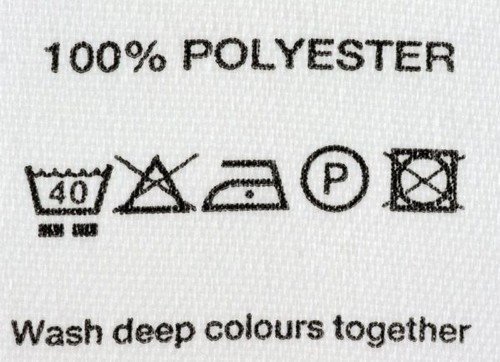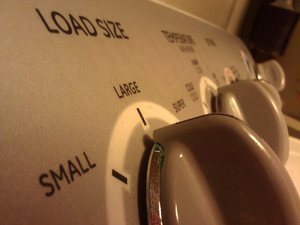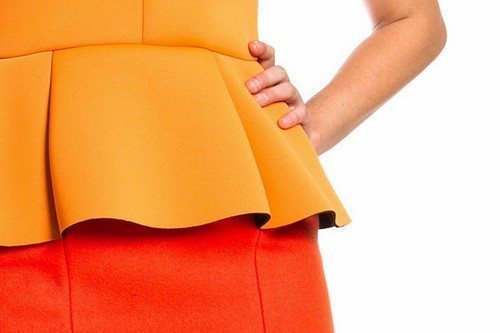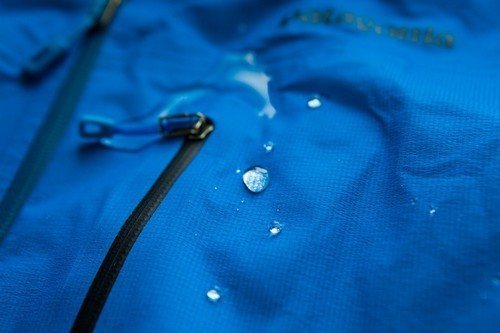A wedding is a very eventful day, so even if you make every effort to keep your wedding dress clean, it is extremely difficult to do so. Today, it is rare for anyone to keep a wedding dress for life; it is usually sold or rented. In order for the next bride to feel like the queen of the holiday, the dress should look perfect, without any signs of wear.

How to get rid of stains?
No wedding is complete without a lavish feast, so wine stains or even greasy stains often remain on a wedding dress. A wedding bouquet can leave a trace of petals or pollen as a keepsake, and after a photo shoot on the grass, even if the weather on the wedding day was sunny, there will undoubtedly be traces of dirt and grass. The ideal option for the so-called "revival" of a dress would be dry cleaning services, but if you cannot use them, you can use the following improvised means:
- You can get rid of sweat stains using a strong salt solution. In this case, you should pay attention to the fact that the smallest crystals of salt are completely dissolved. Otherwise, snags may remain on the delicate fabric or thin lace may tear.
- Wine stains are easily removed with a soap solution. Lightly wipe the stained area with a soft sponge, and the water will easily remove unwanted stains.
- green grass stains - ammonia diluted in warm water will help get rid of them - pour this solution onto the stain and leave until completely dry. Afterwards, treat the stained area with laundry soap and rinse the product thoroughly. This will help get rid of the stain.
Washing a wedding dress
Today, on the shelves of specialized stores it is easy to find detergents for washing products made from any, even the most delicate fabrics. When choosing the right one, remember that ordinary bleach for a wedding dress will become extremely inappropriate - its use, if it does not harm the delicate material, will turn the color of the dress gray or yellow. The former crystal whiteness, characteristic of the vast majority of wedding dresses, is unlikely to return after using bleach containing chlorine. If on your wedding day you chose an outfit made of colored fabrics, then after using such bleaches they will be discolored.

Procedure for washing a wedding dress:
- The water temperature for washing should not exceed 40 degrees. Otherwise, the fabric may shrink or stretch, and the product will not be able to return to its original appearance.
- It is most convenient to wash in a bathtub or large basin. It is optimal to take a third of the volume so that the dress is completely covered with water.
- You should use a soft, new sponge, which must be dipped in a previously prepared soap solution. In this way, you should first process the corset of the dress, then the hem.
- Leave the treated dress in the soapy solution for some time, preferably at least an hour.Then rinse several times until the water from the dress becomes clean and transparent.
- The wedding dress must be dried on a horizontal surface to avoid deformation of the fabric.
It is important to know that when washing a wedding dress, it is strictly forbidden to dissolve washing powder in water after immersing the product in water. So the components of the powder will not be able to dissolve completely, and the dress may be hopelessly damaged due to uneven concentration.
Recommendations for beginners
Any product always has manufacturer's care recommendations, which are compiled depending on the materials from which it is made. And a wedding dress is no exception, so before you start washing, you should figure out what materials were used during sewing. Typically, such dresses use a combination of several fabrics, so the housewife should choose the most optimal option that will not harm the memorable outfit.
Another important point is that if the dress looks neat enough, and to completely restore its external qualities it is enough to eliminate local contamination, you don’t have to wash the product completely. It is enough to get rid of places of contamination, but all of them without exception, even if the stains are not in sight. Moreover, if the dress is mainly made of satin fabrics, then you will probably have to wash it completely - otherwise there will be conspicuous stains on it.
In addition, you should be very careful with the recommendation to rip off all the decorative elements of the dress before washing to avoid their deformation.This should be done as carefully as possible so that there are no marks left on the delicate expensive fabric. If you do not have enough experience in this matter, it is better to seek the help of a professional. In addition, you can use a trick - in order not to re-sew all the decorations afterward, just sew them up with a bandage or gauze - this way all the existing dirt in these places will go away, and the patterns will remain without damage.
After you are sure that there is no dirt left on the dress and all stains have disappeared, you should rinse it thoroughly under running water. It is not recommended to twist the dress, since in this case the skirt and corset may become deformed or stretched.

Can the dress be washed in a washing machine?
Most brides adhere to the classic style of wedding dresses, when metal rings are sewn into the skirt. Such a dress cannot be washed in a machine - you risk ruining not only it, but also the washing machine. In all other cases, of course, you can take a risk by adhering to the manufacturer’s recommendations indicated on the label. But if the consequences do not meet your expectations, there will be no one to file a claim against.
If you nevertheless decide to take a risk and decide to wash your dress in a machine, you should use the delicate wash mode for this, leaving the rinse function on and completely removing the spin cycle. In addition, it is recommended to use special bags for washing such products. They are made of fine mesh, which will resist damage to the material and decorative elements, if any.
Naturally, a wedding dress should be washed separately from other things.
Advice from professionals
Today, specialized stores sell in abundance so-called dry washing powders and stain removers that do not require pre-soaking the product. It is enough to apply such a product to the area of contamination, and after complete drying, remove the residue with a dry sponge or soft brush. For the most part, such products are quite effective and do not leave stains or streaks after use. The main thing is to carefully check before use whether it is acceptable to use on the type of fabric you have.
Remember that after all manipulations with the dress are completed, even if washing was carried out in a vertical position, it is recommended to dry it on a horizontally flat surface, which will help avoid deformation of the materials. After the dress has dried, it should be steamed using the recommended temperature setting.
If the dress was starched before washing, it is recommended to add a little starch to the water during the last rinse.
Thus, despite all the risks and complexity of washing at home, if you follow all the recommendations, you can return the product to its original appearance without using dry cleaning services.









